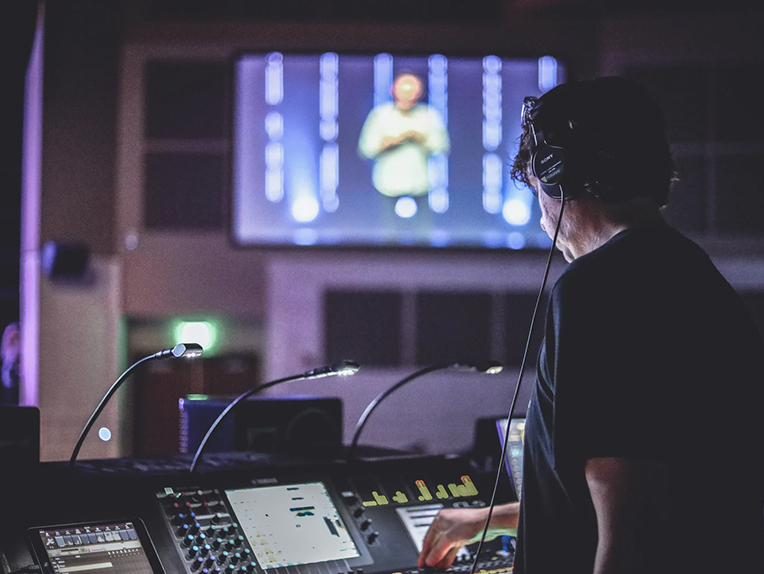“What’s your first priority when you step up to mix a service?” We asked this question of a panel of veteran church techs, and here are their replies.
Jordan Tracy: The preparation of the platform and those who will stand on it will always be my first priority. Leading a service is a privilege and an honor, but it can also be stressful. My goal is to make sure that everyone who walks on that stage will feel like the stage is their home, and that their home is impeccably clean. That they want for nothing. Cables coiled perfectly. Their names labeled where they are set to stand and on their personal mixer. Aim to make it feel like the space is as comfortable as their own living room – even if that means stealing the velvet cushioned, low-back chair from the studio for the newly pregnant vocalist.
When people are your priority, it has a domino effect. Your support, going the extra mile will allow them to get in good sync with each other and play their best. The better they gel, the better sound you’re going to have, and better relationships will be built. It creates a positive feedback loop that eventually gets you the best signal to mix.
Mike Sokol: Intelligibility of the word. And getting the congregation to actively participate in worship, not just attend a concert passively. That means keeping the vocals/message on top of the music, and the overall music volume down low enough so that people can hear themselves sing. I like low 90 dBA mixed out in the room with plenty of subwoofers to make it have an impact.
Brian Maddox: My first – and really only – priority is striving to facilitate the worship service experience for every attendee in the most transparent way possible. But from a practical standpoint, I’ve got a specific hierarchy of things I’m thinking about as the service time approaches:
1. A quick final check of all key input signals. You can’t check everything (keyboards and other direct signals, for instance) but a quick spot check of signals to find anything that may have gone sideways between rehearsal and service time is always a good idea. Sometimes the band members will do a quick note or two once they’re on the platform, and I usually try to catch those opportunities for a check as well.
2. Check the order of service. My church uses Planning Center Online software, and there are occasionally changes right before a service, so I always review to make sure I know what’s happening, and when.
3. Make sure I know what the first thing is out of the gate. Is there a greeting? When does the band kick-off? Who’s leading the first song? The first 30 seconds set the tone for the rest of the service, so avoiding mistakes here is critical.
4. Check my emotional and spiritual focus to make sure I’m present and in the moment. A quick prayer to help me focus on why I’m doing what I’m doing goes a long way to centering my mind and allowing me to do the best I’m capable of.
Final thought. For me, the most important thing in mixing a church service is “hitting my cues.” Making sure the right microphone is on – or just as importantly, off – at the right time is far more important than how good the kick drum sounds. In my experience, if you hit your cues, you’re 85 percent of the way there. Only after that’s sorted do I begin to concentrate on that last 15 percent.
Beckie Campbell: My first priority when setting up to mix a service is to conduct a proper sound check with the band and every individual singer. Make sure they can hear themselves and each other in their “ears.” We run monitors through Allen & Heath ME1s (wired personal monitor mixers) and singers have in-ear monitors, so they need to be dialing themselves in while I dial in the house. Fifteen minutes later we are ready to rehearse or go live – whichever we need to do. Then I check other sources like videos, tracks and the pastor’s mic.




















